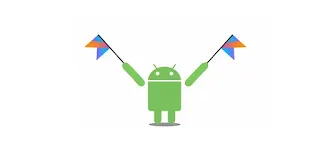12. Double data type in Kotlin programming language
🔢 Double Data Type in Kotlin: Deep Dive and Practical Guide
Welcome, Kotlin developers! Today we'll explore the powerful and precise Double data type in Kotlin, uncovering its characteristics, usage, and best practices for numerical computations.
📊 Understanding Double in Kotlin
Double is a 64-bit floating-point numeric type that represents decimal numbers with high precision. It follows the IEEE 754 standard for floating-point arithmetic, providing a wide range of values from approximately -1.8 × 10^308 to 1.8 × 10^308.
🧮 Basic Declaration and Initialization
// Explicit declaration
val preciseMeasurement: Double = 3.14159
// Type inference
val temperature = 98.6 // Automatically inferred as Double
// Scientific notation
val largeNumber = 6.022e23 // Avogadro's number
🔬 Double Precision and Limitations
While Double provides high precision, it's crucial to understand its limitations:
- Not suitable for precise financial calculations
- Can experience rounding errors
- Limited exact decimal representation
💡 Special Double Values
val positiveInfinity = Double.POSITIVE_INFINITY
val negativeInfinity = Double.NEGATIVE_INFINITY
val notANumber = Double.NaN
println(1.0 / 0) // Positive Infinity
println(-1.0 / 0) // Negative Infinity
🧪 Practical Exercises
⚠️ Potential Pitfalls
// Comparison issue
println(0.1 + 0.2 == 0.3) // Might print false!
// Recommended comparison
fun compareDoubles(a: Double, b: Double): Boolean {
return kotlin.math.abs(a - b) < 0.00001
}
🚀 Performance Considerations
Doubles are generally faster than BigDecimal but less precise. Choose based on your specific requirements.
🔍 Type Conversion
val intValue = 42
val doubleValue = intValue.toDouble() // Explicit conversion
val floatNum: Float = 3.14f
val doubleNum = floatNum.toDouble()
📝 Best Practices
- Use appropriate precision for your domain
- Be cautious with floating-point comparisons
- Consider alternative types for specific scenarios
🏁 Conclusion
Double in Kotlin provides a powerful way to handle decimal numbers with high precision and performance. Understanding its nuances will help you write more robust numerical computations.
📱 Stay Updated with Android Tips!
Join our Telegram channel for exclusive content, useful tips, and the latest Android updates!
👉 Join Our Telegram ChannelGet daily updates and be part of our growing Android community!


Comments
Post a Comment